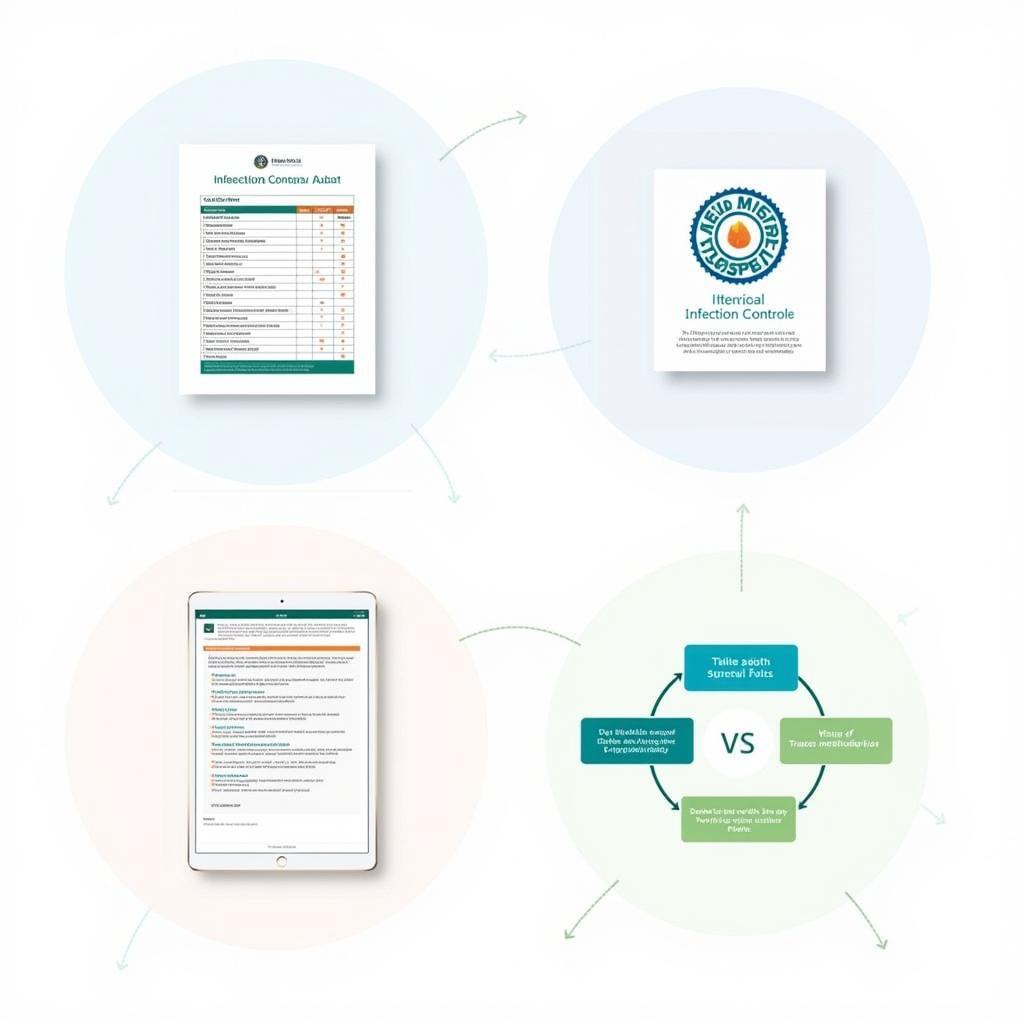Infection control is paramount in primary care settings. An effective infection control audit tool ensures patient safety and staff wellbeing by minimizing the risk of healthcare-associated infections (HAIs). Implementing a robust infection control audit tool allows primary care facilities to identify vulnerabilities, improve practices, and maintain a safe environment.
Why is an Infection Control Audit Tool Essential for Primary Care?
Primary care facilities are often the first point of contact for patients with various health concerns. This makes them crucial for preventing the spread of infections. An infection control audit tool provides a systematic way to evaluate current practices against established standards and guidelines. It helps identify areas for improvement, track progress, and demonstrate a commitment to patient safety.
Key Benefits of Using an Infection Control Audit Tool
- Reduced HAIs: Regular audits can pinpoint weaknesses in infection control protocols, leading to targeted interventions and a decrease in infection rates.
- Improved Patient Outcomes: A safer environment contributes to better patient outcomes and reduces the length of hospital stays and complications.
- Enhanced Staff Safety: Proper infection control practices protect healthcare workers from exposure to infectious diseases.
- Increased Compliance: Audit tools help ensure adherence to regulatory requirements and best practices.
- Cost Savings: Preventing HAIs reduces the need for expensive treatments and prolonged hospitalizations.
Choosing the Right Infection Control Audit Tool for Your Practice
Selecting the appropriate audit tool is crucial for its effectiveness. Consider the following factors when making your choice:
- Scope: The tool should cover all relevant areas of infection control, including hand hygiene, environmental cleaning, and personal protective equipment (PPE) use.
- Ease of Use: A user-friendly tool encourages regular use and accurate data collection.
- Relevance: The tool should align with national and international infection control guidelines and be adaptable to the specific needs of your practice.
- Data Analysis: The tool should facilitate data analysis and reporting to identify trends and areas requiring immediate attention.
Types of Infection Control Audit Tools Available
Various audit tools are available, ranging from simple checklists to sophisticated software programs. Some common types include:
- Observation Checklists: These involve direct observation of practices and recording compliance.
- Tracer Methodology: This method follows the path of a patient or a piece of equipment to identify potential infection control breaches.
- Self-Assessment Tools: These allow healthcare professionals to evaluate their own practices.
- Electronic Audit Tools: Software programs can automate data collection, analysis, and reporting.
 Different Types of Infection Control Audit Tools
Different Types of Infection Control Audit Tools
Implementing and Maintaining an Effective Infection Control Audit Program
Implementing an audit tool is just the first step. To ensure its effectiveness, consider the following:
- Staff Training: Provide comprehensive training to all staff members on the use of the audit tool and the importance of infection control.
- Regular Audits: Conduct audits regularly and consistently to monitor compliance and identify trends.
- Feedback and Action Planning: Share audit findings with staff and develop action plans to address identified deficiencies.
- Continuous Improvement: Regularly review and update the audit tool and the infection control program to ensure they remain relevant and effective.
“Regular audits are not just a formality; they are a crucial investment in patient safety and a demonstration of our commitment to providing high-quality care,” says Dr. Emily Carter, an infectious disease specialist at the University of Chicago Medical Center.
Common Challenges and Solutions in Infection Control Auditing
- Resistance to Change: Address staff concerns and emphasize the benefits of infection control.
- Time Constraints: Integrate audits into existing workflows and allocate dedicated time for data collection.
- Lack of Resources: Prioritize essential aspects of infection control and seek funding for necessary resources.
“Overcoming these challenges requires a collaborative effort and a shared understanding of the importance of infection control,” adds Dr. Carter. “Open communication and a proactive approach are key to success.”
Conclusion
An Infection Control Audit Tool For Primary Care is essential for maintaining a safe environment for both patients and staff. By choosing the right tool, implementing it effectively, and continuously striving for improvement, primary care facilities can minimize the risk of HAIs and contribute to better patient outcomes. Implementing an infection control audit tool is a proactive step towards ensuring a healthier future for everyone.
FAQs
- How often should infection control audits be conducted?
- What are the most common HAIs in primary care settings?
- Who should be involved in the infection control audit process?
- What are the consequences of non-compliance with infection control guidelines?
- How can technology improve infection control auditing?
- What are the key performance indicators for infection control?
- How can we address staff resistance to infection control practices?
Need help with Car Diagnostic? Contact us via WhatsApp: +1(641)206-8880, Email: [email protected] or visit us at 910 Cedar Lane, Chicago, IL 60605, USA. We have a 24/7 customer support team ready to assist you.

Leave a Reply